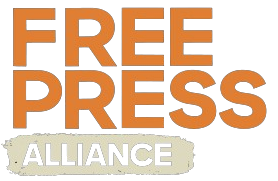Covering protests is a crucial part of a journalist’s work. Demonstrations often become defining moments in a country’s political or social landscape, and journalists play an essential role in documenting them. However, protests can be unpredictable and sometimes dangerous. Whether reporting for a major outlet or working independently, preparation, situational awareness, and ethical judgment are key to staying safe while ensuring accurate and responsible coverage.
-
Prepare before you go
Preparation is your first line of protection when covering any protest. Taking the time to plan can make a critical difference in your safety and ability to report effectively.
- Research the event: Understand who is organizing it, what issues are at stake, and whether there is a risk of violence or police intervention.
- Know the local laws: Familiarize yourself with press rights, rules on recording in public spaces, and any potential curfews or restrictions.
- Create a risk assessment plan: Identify possible threats, such as crowd surges, tear gas, or detentions, and plan how to minimize your exposure.
- Pack smart: Bring only essential gear, including your press ID, first-aid kit, power bank, notebook, protective goggles, mask, and water.
💡 Tip: You can download our Safety Checklist for Journalists Covering Protests as well as the Risk Assessment & Security Protocol.
-
Protect your digital and physical safety
Security isn’t just physical, it’s also digital. The information you collect as a journalist is valuable and can put you or your sources at risk if not properly protected.
- Use encrypted communication: Rely on secure apps to communicate with your editor and colleagues.
- Avoid sharing your live location: Posting real-time updates can expose your whereabouts and attract unwanted attention.
- Secure your devices: Enable strong passwords or screen locks, and avoid storing sensitive contacts or unencrypted footage on your phone or laptop.
- Assess when to identify yourself: Wearing visible press markings can provide protection in some contexts, but in others, neutrality and discretion may be safer.
-
Stay aware and manage risks on the ground
Once you’re on the scene, situational awareness should be your top priority. Protests can shift quickly, and maintaining perspective and distance can make the difference between safe reporting and unnecessary risk.
- Keep exits in sight: always know your escape routes and avoid getting trapped between protesters and police lines.
- Maintain professional distance: focus on observing and documenting events, not becoming part of them.
- Work in pairs when possible: having a colleague increases safety, provides accountability, and ensures someone can respond in case of emergency.
- Identify safe zones: know where medical assistance, legal observers, or neutral spaces are located before and during coverage.
Remember: No story is worth compromising your safety.
-
Ethical considerations
Safety is essential, but so is responsibility. Ethical reporting during protests helps protect the people involved and upholds the integrity of journalism.
- Obtain consent whenever possible, particularly from vulnerable individuals or groups.
- Verify before sharing, avoid amplifying misinformation or unverified claims circulating on social media.
- Protect privacy and dignity, do not publish images or details that could expose individuals to harm or retaliation.
- Be transparent about your methods and sources to strengthen public trust and maintain credibility.
-
After the protest: Debrief and protect your mental health
Covering intense or violent demonstrations can take both a physical and emotional toll. Taking time to process the experience is essential for long-term well-being and professional growth.
- Debrief with colleagues: discuss what worked, what didn’t, and how to improve safety and coordination for future coverage.
- Secure your materials: back up recordings, photos, and notes safely before publishing or submitting your story.
- Allow yourself time to decompress; continuous exposure to stress or confrontation can have lasting effects, rest and recovery are part of responsible journalism.
- Seek support if needed: organizations such as the Dart Center for Journalism & Trauma and the Journalist Trauma Support Network provide valuable guidance and mental health resources for media professionals.
Conclusion
Protest coverage lies at the heart of press freedom, as it amplifies the voices of those demanding justice and change. Yet, no story is worth compromising your safety. With preparation, ethical awareness, and sound judgment, journalists can document these critical moments responsibly while protecting themselves and those around them. In doing so, they not only uphold the principles of journalism but also safeguard the right to inform and be informed.

